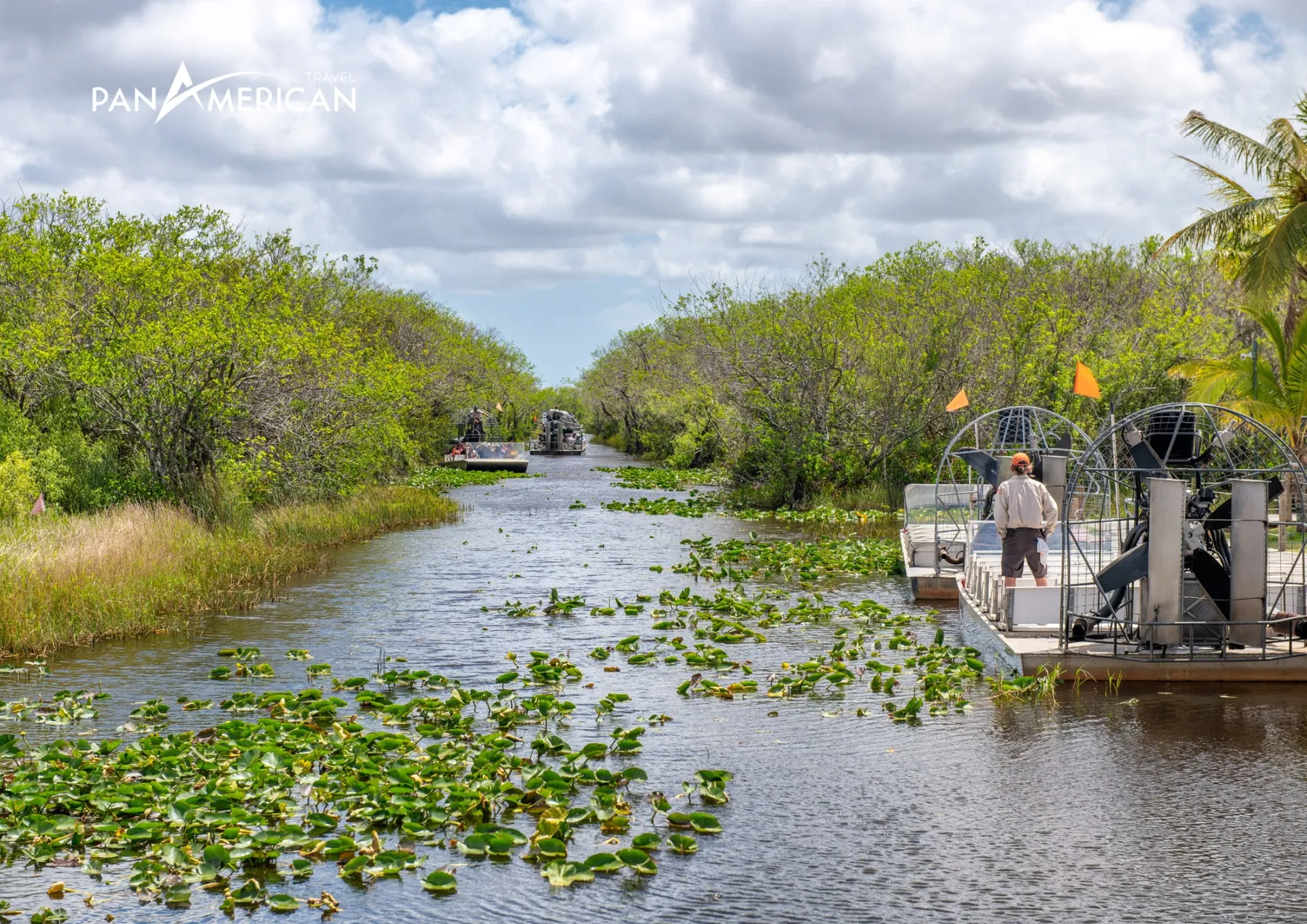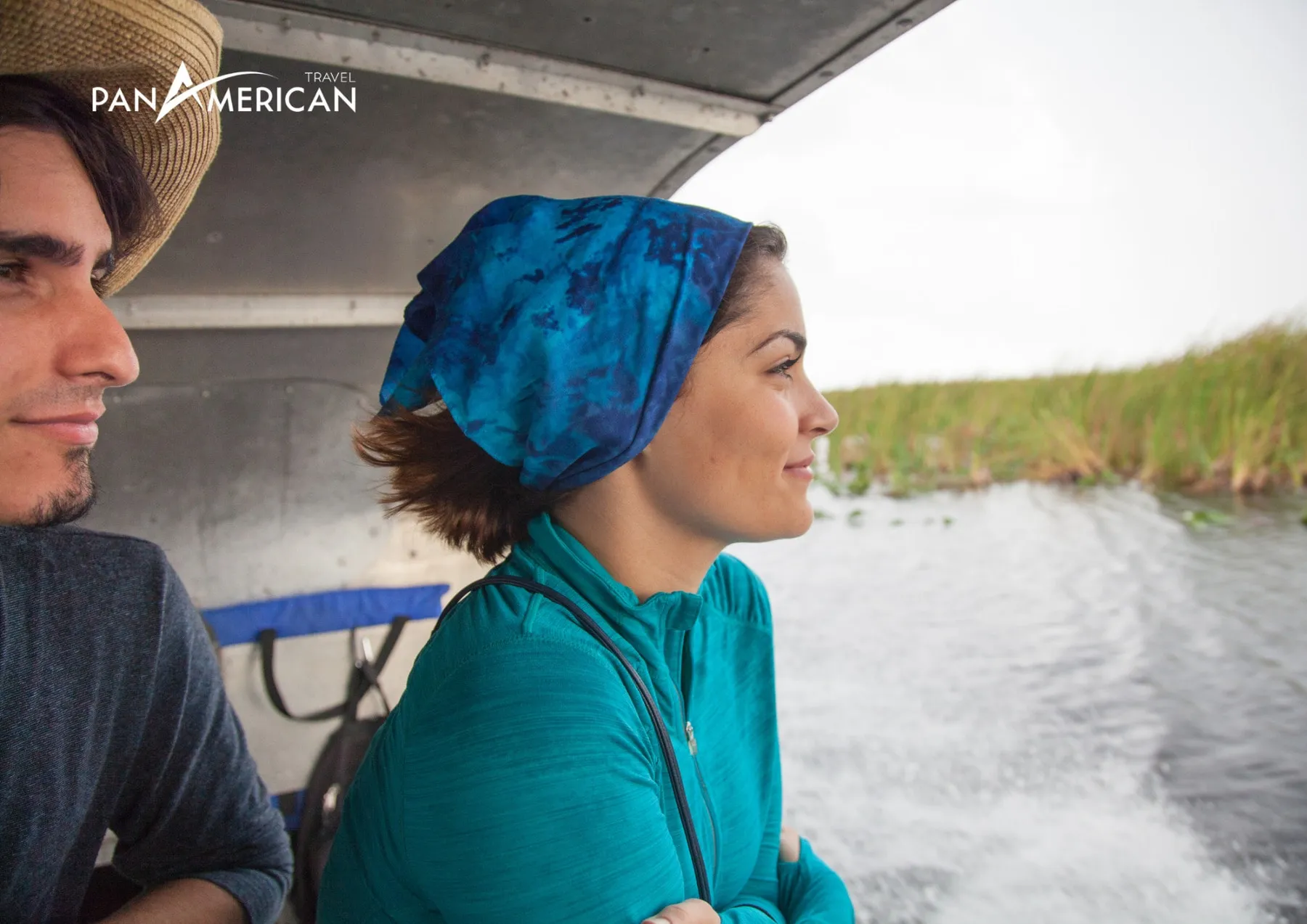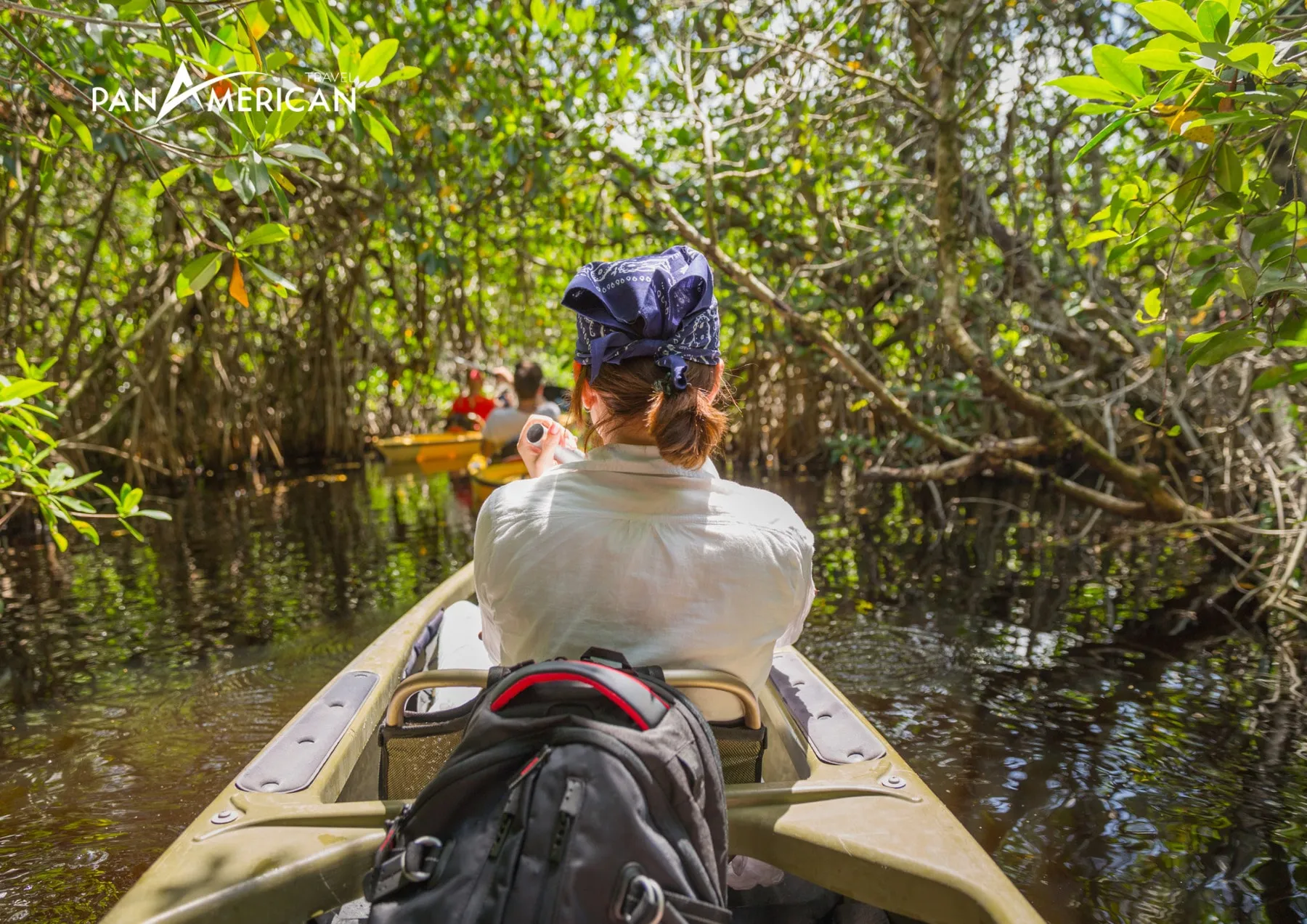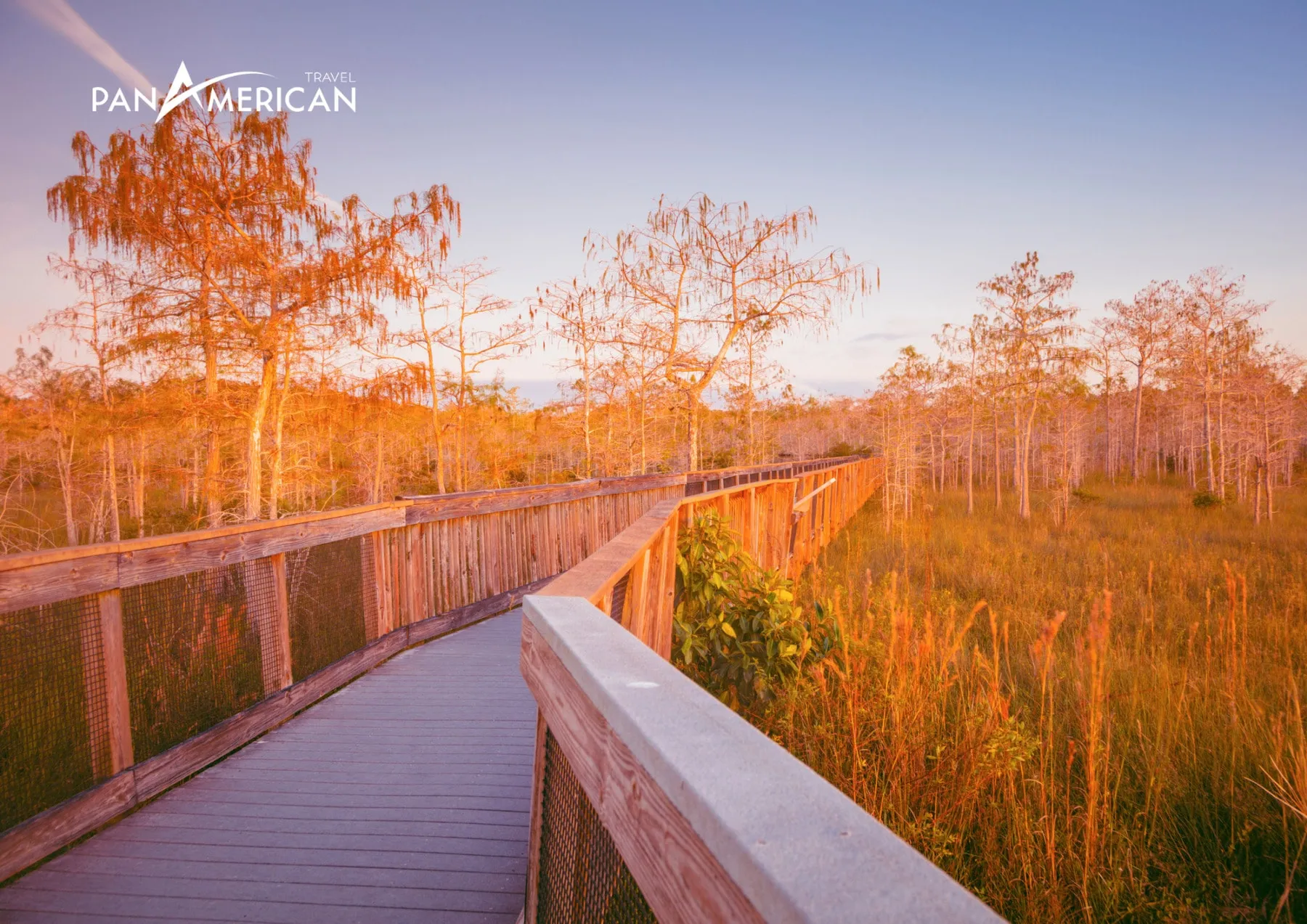Everglades National Park, a crown jewel of Florida, USA, is one of the largest and most unique wetlands on Earth. This incredible destination not only serves as home to countless rare wildlife species but also offers visitors the chance to immerse themselves in the pristine and untamed beauty of nature. Are you ready to dive into the wonders of Everglades National Park? Let’s embark on this exciting journey now!
Everglades National Park: A Natural Treasure Trove
Located in the southern tip of Florida, USA, Everglades National Park represents a vast natural sanctuary celebrated worldwide for its unparalleled biodiversity. Stretching from the southern region of Lake Okeechobee down to Florida Bay, the park encompasses areas within Miami-Dade, Monroe, and Collier counties.

Geographical location of Everglades National Park
The park boasts an incredibly diverse array of flora and fauna, including the American alligator, Florida panther, migratory birds, and countless other rare species. This biodiversity makes Everglades a must-visit for nature lovers and scientists from around the world.
The Evolution of Everglades National Park: From Exploitation to Conservation
The history of Everglades National Park is a testament to the decades-long journey of conservation efforts, highlighting the growing awareness of this unique ecosystem’s importance and its pressing need for protection.
Early Exploration and Exploitation (19th Century – Early 20th Century)
Initially, the Everglades were home to Indigenous tribes such as the Seminole and Miccosukee. However, as European settlers and Americans began exploring and relocating to Florida, the Everglades were viewed as barren wastelands primed for conversion into farmland and urban developments.
By the late 19th century, large-scale drainage projects were initiated to transform the wetlands into agricultural lands. Unfortunately, this caused irreparable harm to the natural habitats of countless native wildlife and plant species.
The Conservation Movement and the Park’s Establishment (1920s – 1940s)
After years of exploitation, many scientists, conservationists, and environmentally conscious citizens began to recognize the Everglades’ critical ecological decline. Biologist Marjory Stoneman Douglas, author of the famous book The Everglades: River of Grass (1947), played a pivotal role in raising public awareness of this fragile ecosystem’s significance.

Biologist Marjory Stoneman Douglas
Her book wholly transformed public perception, helping people understand that the Everglades was a unique river-like ecosystem rather than a useless swamp. Thanks to relentless advocacy by conservationists and activists, the U.S. Congress officially established Everglades National Park on December 6, 1947. It became the world’s first national park created not to protect scenic landscapes, but to preserve a fragile and endangered ecosystem.
Modern Conservation Challenges and Park Expansion (20th Century – Present)
Despite its status as a national park, Everglades continues to face threats, such as water pollution, the invasion of non-native species, and increasing urbanization.
In recent decades, one of the most ambitious restoration initiatives in U.S. history, the Comprehensive Everglades Restoration Plan (CERP), was launched. Approved in 2000, this 30-year project aims to restore natural water flow and improve the water quality in the Everglades.

CERP, the largest conservation project in U.S. history
The Everglades has earned global recognition as a UNESCO World Biosphere Reserve, a World Heritage Site, and a Wetland of International Importance, underscoring its critical role in global ecological conservation.
The Role and Future of the Everglades
Today, the Everglades is not only a symbol of conservation but also one of the most extensively studied ecosystems in the world. Researchers, conservationists, and the U.S. government continue to work tirelessly to safeguard this invaluable ecosystem against emerging environmental challenges. The Everglades represents not just a national treasure but also a natural legacy with immense value for humanity and nature alike.
5 Must-Have Experiences at Everglades National Park
A trip to Everglades National Park offers countless unique experiences. Below are five must-try activities to maximize your visit:
1. Explore the Anhinga Trail
The Anhinga Trail is one of the park’s most popular trails, perfect for beginners and requiring no special hiking skills. This trail allows visitors to observe American alligators, turtles, and migratory birds from viewing platforms along the route.
2. Go on a Kayaking or Canoeing Adventure
Paddling a kayak or canoe through the Everglades is a fantastic way to explore its waterways and swamps. Glide through narrow canals and mangrove forests to witness the diverse ecosystem and encounter wildlife in their natural habitat.
3. Bird-Watching at Shark Valley
Shark Valley is a hotspot for bird-watching in the Everglades. Throughout certain seasons, this area is teeming with migratory birds of various species. Visitors can bike or take a tram tour to reach observation decks and witness these colorful avian treasures.
4. Visit Educational Centers and Join Guided Programs
Visitor centers like the Ernest F. Coe Visitor Center provide detailed information about the park’s history, ecology, and wildlife. Guided programs led by park rangers offer deeper insights into the ecosystem and ongoing conservation projects.
5. Discover the Mangrove Forest Ecosystem
The mangrove forests of the Everglades are a unique ecosystem featuring intricate waterways and rich biodiversity. Boat tours through these forests offer opportunities to admire wildlife while learning about the mangroves’ vital role in environmental balance.

Mangrove Forest ecosystem in Everglades
Essential Tips for Visiting Everglades National Park
Everglades National Park invites you to immerse yourself in a world of wilderness, where diverse ecosystems and stunning landscapes await your discovery. Here’s a guide to help you make the most of your adventure:
Best Time to Visit
The ideal time to visit Everglades is between mid-November and mid-April, during the dry season. This season offers favorable weather conditions, making it easier to explore and spot wildlife. During the wet season (May to November), hotter and more humid conditions, along with higher water levels, can make wildlife viewing more challenging.
What to Bring
To ensure a safe and comfortable visit, prepare the following essentials:
- Sun protection: Sunscreen, sunglasses, and wide-brimmed hats to protect against harmful UV rays.
- Appropriate clothing and footwear: Choose lightweight, breathable clothing and comfortable footwear for outdoor activities.
- Essential gear: Insect repellent to guard against bites, plenty of water to stay hydrated, and snacks for energy.
- Capture the moment: Bring a camera and binoculars to capture the stunning scenery and observe wildlife up close.
Accommodation Options
The park has two main campgrounds: Long Pine Key Campground and Flamingo Campground. Visitors can reserve camping spots or RV parking areas. Note that there are no hotels or lodges within the park itself, so travelers seeking other accommodation options can book stays in nearby towns.
Conclusion
Everglades National Park is not just a travel destination—it is a symbol of life’s incredible diversity. A visit here offers an unparalleled opportunity to connect with the wild, explore a one-of-a-kind ecosystem, and appreciate the intricate relationship between humans and the environment. Start planning your trip today and dive into the wonders of Everglades National Park. Are you ready for this unforgettable adventure?